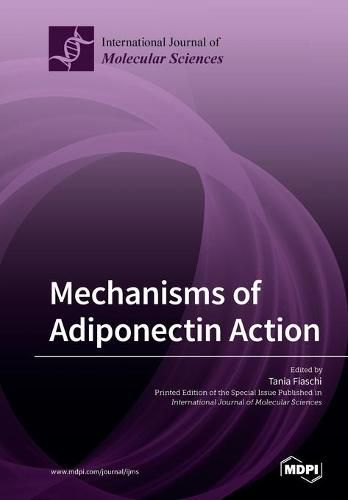Readings Newsletter
Become a Readings Member to make your shopping experience even easier.
Sign in or sign up for free!
You’re not far away from qualifying for FREE standard shipping within Australia
You’ve qualified for FREE standard shipping within Australia
The cart is loading…






This title is printed to order. This book may have been self-published. If so, we cannot guarantee the quality of the content. In the main most books will have gone through the editing process however some may not. We therefore suggest that you be aware of this before ordering this book. If in doubt check either the author or publisher’s details as we are unable to accept any returns unless they are faulty. Please contact us if you have any questions.
The adipokine adiponectin is very concentrated in plasma, and decreased levels of adiponectin are associated with pathological conditions such as obesity, diabetes, cardiovascular diseases, and metabolic syndrome. When produced in its full-length form, adiponectin self-associates to generate multimeric complexes. The full-length form of adiponectin can be cleaved by the globular form of elastase that is produced locally, and the resulting biological effects are exerted in a paracrine or autocrine manner. The different forms of adiponectin bind to specific receptors consisting of two G-protein-independent, seven-transmembrane-spanning receptors, called AdipoR1 and AdipoR2, while T-cadherin has been identified as a potential receptor for high molecular weight complexes of adiponectin. Adiponectin exerts a key role in cellular metabolism, regulating glucose levels as well as fatty acid breakdown. However, its biological effects are heterogeneous, involving multiple target tissues. The Special Issue Mechanisms of Adiponectin Action highlights the pleiotropic role of this hormone through 3 research articles and 7 reviews. These papers focus on the recent knowledge regarding adiponectin in different target tissues, both in healthy and in diseased conditions.
$9.00 standard shipping within Australia
FREE standard shipping within Australia for orders over $100.00
Express & International shipping calculated at checkout
This title is printed to order. This book may have been self-published. If so, we cannot guarantee the quality of the content. In the main most books will have gone through the editing process however some may not. We therefore suggest that you be aware of this before ordering this book. If in doubt check either the author or publisher’s details as we are unable to accept any returns unless they are faulty. Please contact us if you have any questions.
The adipokine adiponectin is very concentrated in plasma, and decreased levels of adiponectin are associated with pathological conditions such as obesity, diabetes, cardiovascular diseases, and metabolic syndrome. When produced in its full-length form, adiponectin self-associates to generate multimeric complexes. The full-length form of adiponectin can be cleaved by the globular form of elastase that is produced locally, and the resulting biological effects are exerted in a paracrine or autocrine manner. The different forms of adiponectin bind to specific receptors consisting of two G-protein-independent, seven-transmembrane-spanning receptors, called AdipoR1 and AdipoR2, while T-cadherin has been identified as a potential receptor for high molecular weight complexes of adiponectin. Adiponectin exerts a key role in cellular metabolism, regulating glucose levels as well as fatty acid breakdown. However, its biological effects are heterogeneous, involving multiple target tissues. The Special Issue Mechanisms of Adiponectin Action highlights the pleiotropic role of this hormone through 3 research articles and 7 reviews. These papers focus on the recent knowledge regarding adiponectin in different target tissues, both in healthy and in diseased conditions.